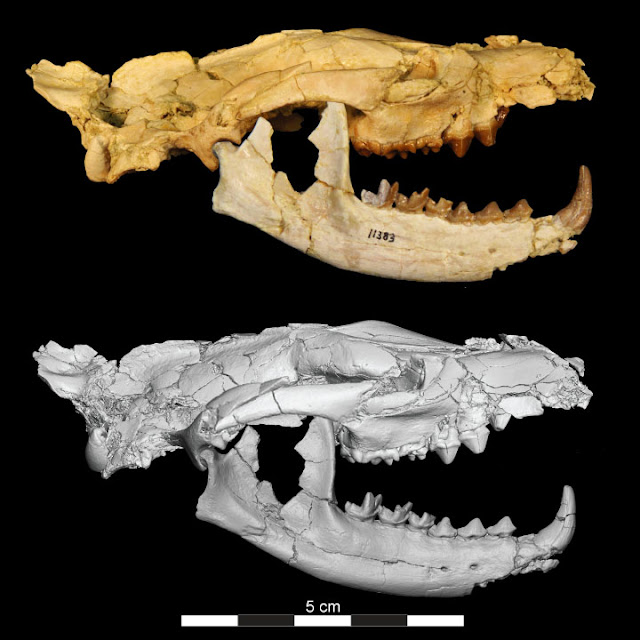The whole concept of the 'Little Ice Age' is 'misleading', as the changes were small-scale, seasonal and insignificant compared with present-day global warming, a group of solar and climate scientists argue.
But in a new paper in Astronomy & Geophysics, the house journal of the Royal Astronomical Society, Professor Mike Lockwood, of the University of Reading, and his collaborators, note that the temperature shift was smaller than that seen in recent decades resulting from the emission of greenhouse gases, and that although low solar activity may have been one driving factor, it certainly was not the only one.
Professor Lockwood said: "Commentators frequently refer to the Little Ice Age in discussions on climate change. We wanted to carry out a comprehensive study to see just how reliable the evidence is for a cooler climate, how big an impact it really had and how strong the evidence for a solar cause really was.
"On the whole the Little Ice Age was a manageable downturn in climate concentrated in particular regions, even though places like the UK had a larger fraction of cold winters. Our research suggests that there is no single explanation for this, that warm summers continued much as they do today and that not all winters were cold."
Researchers scrutinised historical records, such as the accounts of 'frost fairs' when the River Thames froze solid, and looked at the paintings from the era, such as the landscapes of Pieter Bruegel the Elder, with 'Hunters in the Snow' depicting a cold winter scene. Both of these are cited in support of the Little Ice Age concept.
 |
| "The Hunters in the Snow", Pieter Bruegel the Elder, 1565 [Credit: Kunsthistorisches Museum, Vienna, Austria] |
The Reading-led team looked at the various pieces of evidence in more detail. They compared direct temperature records and proxy data such as ice records, with the years when the Thames was frozen over (whether or not a frost fair took place), and with the indications of solar activity.
Historical climate change is assessed through a variety of means. The Central England Temperature (CET) dataset tracks temperature from 1659, making it the oldest and longest running meteorological instrumental data sequence in the world. This direct record is supplemented by studies of biological proxies such as tree rings, corals, insect numbers and molluscs, all sensitive to climate change.
The authors draw comparisons with the ice ages proper. Cores taken from Antarctic ice allow global temperatures to be inferred, by measuring the proportions of deuterium (2H), a heavier atom of hydrogen, and of the heavier oxygen atom 18O, compared with their lighter 'normal' counterparts. It takes more energy to evaporate water with a higher proportion of these atoms, and they are more easily lost from rainfall, before they are deposited in ice found nearer the poles. The changing proportion of these atoms then allows researchers to assess how the temperature has changed over millions of years.
From these comparisons, the scientists argue that the description of the period as an Ice Age is misleading, as temperatures in that period fell far less than in a glaciation. During the Little Ice Age (LIA), the average temperature in the northern hemisphere fell by around 0.5 degrees. In contrast, in the most recent major glaciation that came to an end around 12,000 years ago, global temperatures were typically 8 degrees Celsius colder than today.
 |
| "Haymaking", Pieter Bruegel the Elder, 1565 [Credit: Kunsthistorisches Museum, Vienna, Austria] |
Selective use of art historical evidence appears to reinforce the illusion of a prolonged cold spell. Yet 'Hunters in the Snow', depicting a January scene, is part of a series by Bruegel known as 'The Twelve Months'. Seven of these paintings may have been lost, but 'The Gloomy Day' (February), 'Haymaking' (July), and 'The Return of the Herd' (November) all give no indication of unusually cold conditions. Consistent with this, Lockwood and his team note that even at the height of the LIA period, colder European winters were still accompanied by many warm summers.
For example, 1701 is close to the lowest point of the Little Ice Age, yet in both Paris and London the summer was reported as being unbearably hot and the CET for July that year is the 10th hottest on record, with average temperatures for the month reaching 18.3°C. The year 1676 is the second hottest June on record at 18.0°C, yet it too was in the middle of a run of cold winters. Such high summer temperatures do not fit at all with the name "Little Ice Age".
Much more dramatic variations can result from large volcanic eruptions. Samalas, a volcano which erupted in 1257 in what is now Indonesia, ejected large amounts of dust into the atmosphere, causing a temporary cooling effect. The years between 1570 and 1730, corresponding to the coldest part of the LIA, also saw continuous lower level volcanic activity that may have suppressed temperatures. Volcanic eruptions undoubtedly cause both cold winters and cold summers. One of the clearest examples was the Tambora eruption of July 1815, which caused the next year to be called "the year without a summer".
Professor Lockwood said: "This study provides little solace for the future, as we face the challenge of global warming. Solar activity appears to be declining at present, but any cooling effect that results will be more than offset by the effect of rising carbon dioxide emissions, and provides us with no excuse for inaction."
Source: Royal Astronomical Society [April 04, 2017]







0 komentar:
Post a Comment